
Monterey Park: A Cultural Mosaic in Sunny California
Explore Monterey Park: A vibrant cultural hub in California, known for its rich Asian heritage, delicious cuisine, and scenic parks, just a stone's throw from Los Angeles.
Monterey Park, nestled in the heart of California, offers a unique blend of cultures, making it a fascinating destination for tourists. Known for its rich Asian influence, the city boasts a variety of authentic dining experiences, from dim sum to hot pot. Strolling through its streets, visitors can explore vibrant markets filled with exotic goods and fresh produce. History enthusiasts will appreciate the city's deep roots, with landmarks like Garvey Ranch Observatory and the Heritage Park showcasing Monterey Park's past. The community's dedication to preserving its history is evident in well-maintained parks and public spaces, perfect for a leisurely afternoon. Nature lovers will find solace in the scenic beauty of Monterey Park's gardens and hiking trails. The city's close proximity to Los Angeles also means that visitors can easily access the bustling metropolis while enjoying the tranquility of a smaller town. Whether you're here for the culture, history, or nature, Monterey Park promises a memorable visit.
Local tips in Monterey Park
- Visit Atlantic Times Square for a mix of shopping, dining, and entertainment options.
- Try the local dim sum; some of the best spots are clustered around Garvey Avenue.
- Take advantage of the numerous public parks for a relaxing picnic or a scenic walk.
- Check out the local farmers' markets for fresh produce and unique finds.
- Explore the city's rich history at the Monterey Park Historical Museum and Heritage Park.
Monterey Park: A Cultural Mosaic in Sunny California
Monterey Park, nestled in the heart of California, offers a unique blend of cultures, making it a fascinating destination for tourists. Known for its rich Asian influence, the city boasts a variety of authentic dining experiences, from dim sum to hot pot. Strolling through its streets, visitors can explore vibrant markets filled with exotic goods and fresh produce. History enthusiasts will appreciate the city's deep roots, with landmarks like Garvey Ranch Observatory and the Heritage Park showcasing Monterey Park's past. The community's dedication to preserving its history is evident in well-maintained parks and public spaces, perfect for a leisurely afternoon. Nature lovers will find solace in the scenic beauty of Monterey Park's gardens and hiking trails. The city's close proximity to Los Angeles also means that visitors can easily access the bustling metropolis while enjoying the tranquility of a smaller town. Whether you're here for the culture, history, or nature, Monterey Park promises a memorable visit.
When is the best time to go to Monterey Park?
Iconic landmarks you can’t miss
Monterey Park Marketplace Shopping Center
Experience the vibrant shopping and dining atmosphere at Monterey Park Marketplace, where excitement and variety await every visitor!
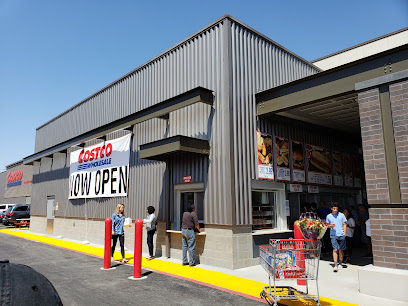
Atlantic Times Square
Discover Atlantic Times Square, Monterey Park's vibrant shopping mall filled with diverse shops, dining options, and entertainment for every visitor.

Marie Callender's
Experience the heart of American cuisine at Marie Callender's in Monterey Park, where comfort food and homemade pies await you.

Mama Lu's Dumpling House
Experience authentic Taiwanese and Chinese dumplings at Mama Lu's Dumpling House, a must-visit eatery in Monterey Park that delights every palate.

Barnes Park
Discover the natural beauty and recreational charm of Barnes Park in Monterey Park, California—an ideal destination for relaxation and outdoor activities.

Daikokuya Monterey Park
Experience authentic Japanese ramen at Daikokuya Monterey Park, where rich flavors and cozy ambiance come together for an unforgettable dining experience.

Garvey Ranch Park
Explore Garvey Ranch Park, a peaceful oasis in Monterey Park, CA, featuring scenic trails, historical landmarks, and family-friendly amenities.
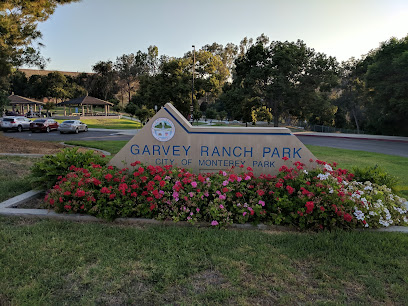
Sequoia Park
Explore Sequoia Park in Monterey Park, CA, a tranquil haven perfect for family picnics, leisurely walks, and nature appreciation.

Mandarin Noodle House
Experience the best of authentic Chinese cuisine at Mandarin Noodle House, where delightful dumplings and flavorful noodles await every food lover.

Dim Sum Express
Experience the authentic taste of Chinese culinary tradition at Dim Sum Express, Monterey Park's go-to spot for delightful dim sum and fast food.

Ravello Osteria
Experience the essence of Italy in Monterey Park at Ravello Osteria, where every meal is a celebration of authentic flavors and warm hospitality.

Pieology Pizzeria Atlantic Blvd, Monterey Park, CA
Discover a pizzeria that redefines customizable dining with fresh ingredients and a vibrant atmosphere at Pieology Pizzeria in Monterey Park.

Seafood Palace
Discover the best seafood in Monterey Park at Seafood Palace, where freshness meets flavor in a welcoming atmosphere.

Monterey Park Mall
Discover shopping, dining, and cultural experiences at Monterey Park Mall, a vibrant retail hub in California.

Tea Brick
Explore the vibrant flavors of Tea Brick in Monterey Park, where bubble tea meets delightful desserts in a cozy tea house atmosphere.

Unmissable attractions to see
Universal Studios Hollywood
Explore the magic of movies at Universal Studios Hollywood, where thrilling rides and iconic attractions await every visitor.

Santa Monica Pier
Discover the lively Santa Monica Pier, where historical charm meets modern fun with breathtaking ocean views and endless entertainment options.

Disneyland Park
Experience the magic of Disneyland Park in Anaheim, California—where dreams come true and adventures await at every corner.

Griffith Park
Explore Griffith Park: An Urban Oasis in Los Angeles with Scenic Trails, Iconic Attractions, and Endless Outdoor Adventures.

Universal CityWalk Hollywood
Explore Universal CityWalk Hollywood, the ultimate destination for shopping, dining, and entertainment in the heart of California's iconic movie magic.

Knott's Berry Farm
Discover the magic of Knott's Berry Farm, a thrilling theme park in Buena Park, California, offering rides, attractions, and delightful culinary experiences.

Downtown Disney District
Discover the magical Downtown Disney District in Anaheim, where shopping, dining, and entertainment come together in a vibrant, family-friendly atmosphere.

The Getty
Explore The Getty, an iconic art museum in Los Angeles featuring stunning architecture, breathtaking gardens, and a world-class art collection.

Crypto.com Arena
Discover the excitement of Crypto.com Arena, a premier sports and entertainment venue in Los Angeles, home to thrilling events and unforgettable experiences.

Grand Central Market
Discover the vibrant culinary scene of Los Angeles at Grand Central Market, a historic food hall offering diverse flavors and local delights.

Aquarium of the Pacific
Explore the vibrant marine life and conservation efforts at the Aquarium of the Pacific, a top Long Beach tourist attraction for families and ocean enthusiasts.
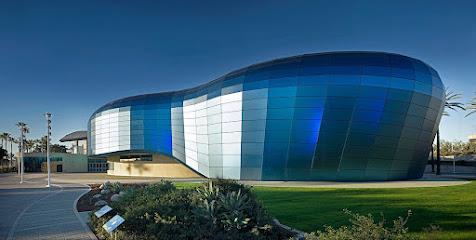
Angel Stadium
Discover the thrill of baseball at Angel Stadium in Anaheim, California, a premier destination for fans and tourists alike.

Redondo Beach Pier
Experience the vibrant charm of Redondo Beach Pier, where stunning ocean views and delicious seafood await every visitor.
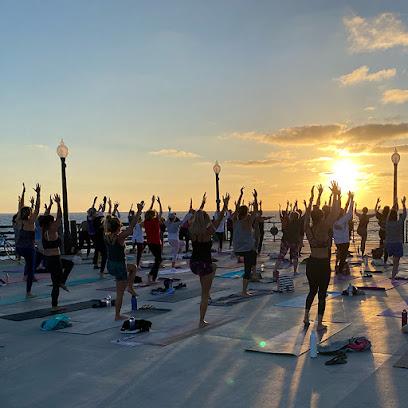
The Queen Mary
Explore the captivating Queen Mary in Long Beach, a historical landmark blending maritime history with modern luxury and unforgettable experiences.

Los Angeles County Museum of Art
Explore the Los Angeles County Museum of Art, a vibrant hub of creativity showcasing an extensive collection of art from around the world.

Essential places to dine
Luminarias Restaurant
Experience the best of American and Spanish cuisine at Luminarias Restaurant in Monterey Park—where every meal is a celebration of flavor.

NBC Seafood Restaurant
Experience authentic Chinese flavors blended with fresh seafood at NBC Seafood Restaurant in Monterey Park, where every dish tells a delicious story.

Marie Callender's
Experience the essence of American comfort food at Marie Callender's in Monterey Park—where every meal feels like home.

Mama Lu's Dumpling House
Experience authentic Chinese and Taiwanese flavors at Mama Lu's Dumpling House in Monterey Park—where every dumpling tells a story.
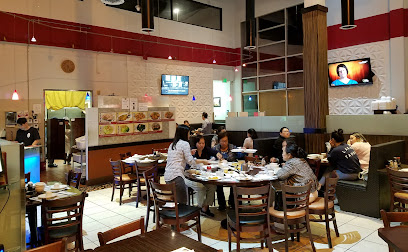
Cook's Tortas
Discover authentic Mexican fast food at Cook's Tortas in Monterey Park, where every bite is a celebration of flavor.

Daikokuya Monterey Park
Discover the rich flavors of Japan at Daikokuya Monterey Park – your go-to spot for authentic ramen experiences.

Kaiba Japanese Restaurant - Monterey Park
Savor the essence of Japan at Kaiba Japanese Restaurant in Monterey Park—home to delicious ramen and fresh sushi in a welcoming atmosphere.

Monterey Palace Restaurant
Experience authentic Chinese cuisine and fresh seafood at Monterey Palace Restaurant in Monterey Park – a culinary gem for every traveler.

Mandarin Noodle House
Discover authentic flavors at Mandarin Noodle House - a premier destination for Chinese cuisine featuring handmade noodles and delightful dumplings.
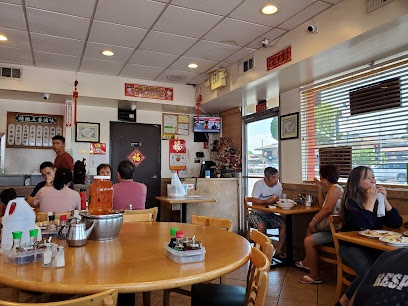
Dim Sum Express
Explore authentic dim sum delights at Dim Sum Express in Monterey Park - where flavor meets affordability in every bite!

Alice's Kitchen
Experience authentic Hong Kong-style fast food at Alice's Kitchen in Monterey Park—where tradition meets flavor in every dish.
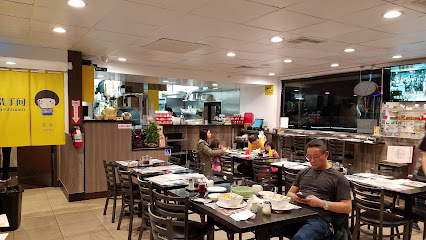
Pieology Pizzeria Atlantic Blvd, Monterey Park, CA
Discover customizable pizzas at Pieology Pizzeria in Monterey Park - where every bite is tailored just for you!

Seafood Palace
Savor the finest seafood delicacies at Seafood Palace in Monterey Park - where ocean flavors meet culinary excellence.

Chubby Cattle BBQ | Monterey Park
Discover the authentic taste of Yakiniku at Chubby Cattle BBQ in Monterey Park – where grilling meets gourmet.
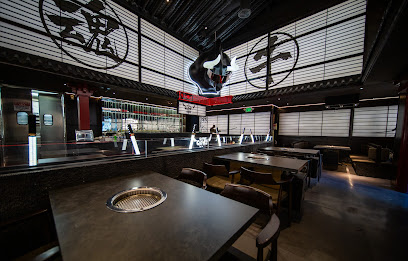
BREW KITCHEN BAR
Experience culinary excellence at Brew Kitchen Bar in Monterey Park—where New American cuisine meets vibrant bar culture.

Markets, malls and hidden boutiques
Atlantic Square
Explore Atlantic Square, Monterey Park's vibrant shopping mall with trendy shops and diverse dining options for a delightful experience.

Atlantic Times Square
Experience shopping, dining, and entertainment at Atlantic Times Square, Monterey Park's vibrant shopping hub with a cultural twist.

Monterey Park Village
Discover Monterey Park Village - A shopping and dining paradise in California with a vibrant atmosphere and diverse offerings.

Monterey Park Mall
Explore Monterey Park Mall: A shopping and dining paradise in California, offering a unique blend of local culture and retail treasures.

Daiso
Explore Daiso, your go-to destination for budget-friendly Asian goods and unique gifts in Monterey Park, California.
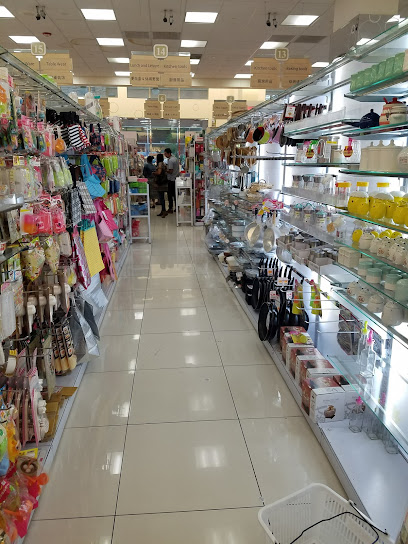
Wing Hop Fung
Explore Wing Hop Fung in Monterey Park for an authentic herbal medicine experience, featuring a rich selection of herbs, teas, and wines.

TS Emporium
Explore the vibrant world of herbs and Asian grocery at TS Emporium in Monterey Park, California, your gateway to authentic flavors and health foods.

Atlantic Place Shopping Center
Explore the Atlantic Place Shopping Center in Monterey Park for a diverse shopping experience with delightful dining options and vibrant atmosphere.

Dollar Tree
Shop smart at Dollar Tree in Monterey Park for unbeatable deals on crafts, groceries, and more, making every visit a budget-friendly adventure.

Galleria Monterey
Explore Galleria Monterey, a vibrant shopping destination in California offering diverse stores, delicious dining, and a lively atmosphere for all visitors.

Country Store Liquor
Explore a diverse selection of wines, craft beers, and premium spirits at Country Store Liquor in Monterey Park, California.

Divine's Furniture Store
Discover unique antique and collectible furniture at Divine's Furniture Store in Monterey Park, a treasure trove for vintage enthusiasts.

Vasquez Flowers and gifts
Explore Vasquez Flowers and Gifts, a charming boutique in Monterey Park offering exquisite floral arrangements and unique gifts that capture California's beauty.

$1 Mart
Explore Monterey Park's $1 Mart for unbeatable deals on essentials, unique finds, and budget-friendly shopping during your travels.
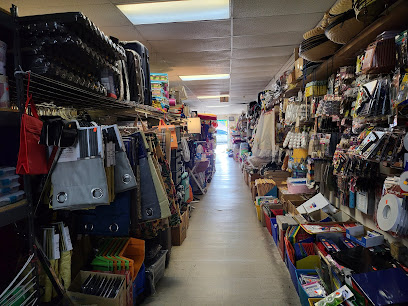
Monterey Park Outlet 蒙特利公园服装店
Discover the ultimate shopping experience at Monterey Park Outlet, where style meets affordability in a vibrant clothing haven.

Essential bars & hidden hideouts
Luminarias Restaurant
Experience the vibrant fusion of American and Spanish flavors at Luminarias Restaurant in Monterey Park, where culinary excellence meets inviting ambiance.

Turn 12 Bar & Grill
Experience the excitement of Turn 12 Bar & Grill in Monterey, where delicious Californian cuisine meets a thrilling sports atmosphere.

The Crown & Anchor
Discover The Crown & Anchor, a British-themed bar and restaurant in Monterey, offering traditional fare and a vibrant atmosphere for all travelers.

London Bridge Pub
Experience the vibrant atmosphere and delicious cuisine at London Bridge Pub, Monterey's favorite spot for pub-style dining with stunning coastal views.

Daikokuya Monterey Park
Experience authentic Japanese ramen at Daikokuya Monterey Park, where rich flavors and a cozy atmosphere await every visitor.

Kaiba Japanese Restaurant - Monterey Park
Delight in authentic Japanese cuisine at Kaiba Japanese Restaurant, featuring delicious ramen and fresh sushi in Monterey Park.

Venice Room
Experience the vibrant atmosphere of The Venice Room, a top cocktail bar in Monterey Park, known for its affordable drinks and lively entertainment.
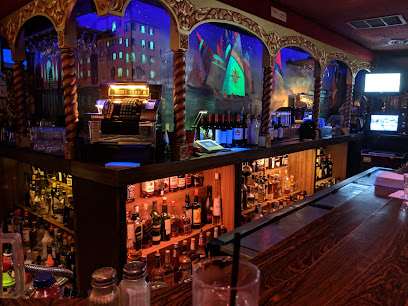
Britannia Arms
Experience the vibrant atmosphere of Britannia Arms, a top pub and restaurant in Monterey, CA, known for its delicious food and extensive drink menu.

Buffalo Wild Wings
Discover the ultimate sports bar experience at Buffalo Wild Wings in Monterey Park, featuring delicious chicken wings and a vibrant atmosphere for all sports fans.

BREW KITCHEN BAR
Experience the vibrant flavors of New American cuisine in a lively atmosphere at Brew Kitchen Bar in Monterey Park, CA.

Taihei Sushi Restaurant
Discover the authentic taste of Japan at Taihei Sushi Restaurant in Monterey Park, where fresh sushi and inviting ambiance combine for an unforgettable dining experience.

The Salty Seal Brewpub and Sports Bar
Experience the vibrant atmosphere of The Salty Seal Brewpub and Sports Bar, where craft beer and sports meet delicious comfort food in Monterey.

Shinano Restaurant
Experience authentic Japanese cuisine at Shinano Restaurant, where fresh sushi and izakaya dishes create an unforgettable dining experience in Monterey Park.

Alfredo's Cantina
Experience the vibrant nightlife of Monterey at Alfredo's Cantina, where creative cocktails and a cozy atmosphere await.

Pearl Hour
Explore the vibrant cocktail scene at Pearl Hour, Monterey's quirky bar known for its unusual drinks and cozy atmosphere.
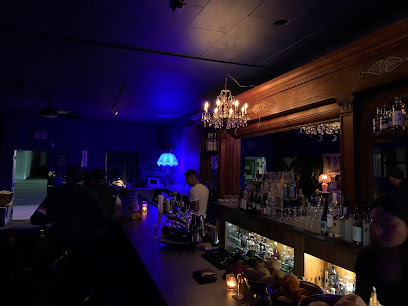
Local Phrases
-
- Hello你好
[Nǐ hǎo] - Goodbye再见
[Zàijiàn] - Yes是
[Shì] - No不
[Bù] - Please/You're welcome请
[Qǐng] - Thank you谢谢
[Xièxiè] - Excuse me/Sorry对不起
[Duìbùqǐ] - How are you?你好吗?
[Nǐ hǎo ma?] - Fine. And you?我很好。你呢?
[Wǒ hěn hǎo. Nǐ ne?] - Do you speak English?你会说英语吗?
[Nǐ huì shuō yīngyǔ ma?] - I don't understand我不明白
[Wǒ bù míngbái]
- Hello你好
-
- I'd like to see the menu, please请给我看菜单
[Qǐng gěi wǒ kàn càidān] - I don't eat meat我不吃肉
[Wǒ bù chī ròu] - Cheers!干杯!
[Gānbēi!] - I would like to pay, please我想付款,请
[Wǒ xiǎng fùkuǎn, qǐng]
- I'd like to see the menu, please请给我看菜单
-
- Help!救命!
[Jiùmìng!] - Go away!走开!
[Zǒu kāi!] - Call the Police!叫警察!
[Jiào jǐngchá!] - Call a doctor!叫医生!
[Jiào yīshēng!] - I'm lost我迷路了
[Wǒ mílùle] - I'm ill我病了
[Wǒ bìngle]
- Help!救命!
-
- I'd like to buy...我想买...
[Wǒ xiǎng mǎi...] - I'm just looking我只是看看
[Wǒ zhǐ shì kàn kàn] - How much is it?多少钱?
[Duōshǎo qián?] - That's too expensive太贵了
[Tài guìle] - Can you lower the price?你能降价吗?
[Nǐ néng jiàngjià ma?]
- I'd like to buy...我想买...
-
- What time is it?现在几点了?
[Xiànzài jǐ diǎnle?] - It's one o'clock现在一点
[Xiànzài yī diǎn] - Half past (10)十点半
[Shí diǎn bàn] - Morning早上
[Zǎoshang] - Afternoon下午
[Xiàwǔ] - Evening晚上
[Wǎnshàng] - Yesterday昨天
[Zuótiān] - Today今天
[Jīntiān] - Tomorrow明天
[Míngtiān] - 1一
[Yī] - 2二
[Èr] - 3三
[Sān] - 4四
[Sì] - 5五
[Wǔ] - 6六
[Liù] - 7七
[Qī] - 8八
[Bā] - 9九
[Jiǔ] - 10十
[Shí]
- What time is it?现在几点了?
-
- Where's a/the...?......在哪里?
[......Zài nǎlǐ?] - What's the address?地址是什么?
[Dìzhǐ shì shénme?] - Can you show me (on the map)?你能给我看看地图吗?
[Nǐ néng gěi wǒ kàn kàn dìtú ma?] - When's the next (bus)?下一趟车是什么时候?
[Xià yī tàng chē shì shénme shíhòu?] - A ticket (to ....)一张票(去......)
[Yī zhāng piào (qù......)]
- Where's a/the...?......在哪里?
History of Monterey Park
-
Long before European settlers arrived, the land that is now Monterey Park was home to the Tongva people. The Tongva thrived in the region with their rich culture, subsisting on the natural resources provided by the area’s rivers, valleys, and hills. Their presence is still felt today through archaeological sites and cultural artifacts that offer a glimpse into their way of life.
-
In the late 18th century, Spanish missionaries arrived in the area, and the land became part of the Mission San Gabriel Arcángel, founded in 1771. This mission was pivotal in the Spanish colonization efforts and played a significant role in the spread of Christianity among the indigenous populations. The mission system also introduced European agricultural practices to the region.
-
Following Mexico’s independence from Spain in 1821, California became part of Mexican territory. During this period, large ranchos were established, including Rancho San Antonio, which included parts of present-day Monterey Park. After the Mexican-American War, California was ceded to the United States in 1848, leading to significant changes in land ownership and development.
-
Monterey Park was officially incorporated on May 29, 1916. The early 20th century saw a wave of development as the city expanded. The arrival of the Pacific Electric Railway in the 1920s spurred growth, making the area more accessible and attractive to new residents. The city’s infrastructure, including roads, schools, and public services, began to take shape during this period.
-
Following World War II, Monterey Park experienced another surge in growth. The post-war economic boom and the development of the Interstate Highway System contributed to the city’s expansion. The population diversified as people from various cultural backgrounds settled in the area, contributing to the rich tapestry of communities that characterize Monterey Park today.
-
During the latter half of the 20th century, Monterey Park transformed into a vibrant suburban hub. The city became known for its large Asian-American community, particularly Chinese immigrants, who opened businesses, restaurants, and cultural institutions. This transformation earned Monterey Park the nickname 'The First Suburban Chinatown.' The city’s cultural diversity is celebrated through various festivals, markets, and community events.
-
Today, Monterey Park is known for its thriving multicultural environment, excellent schools, and family-friendly atmosphere. The city continues to honor its rich history while embracing modernity. Landmarks such as the Vincent Price Art Museum, the Garvey Ranch Observatory, and the annual Lunar New Year Festival highlight the unique blend of heritage and contemporary culture that defines Monterey Park.
Monterey Park Essentials
-
Monterey Park is located in the western San Gabriel Valley region of Los Angeles County, California. The nearest major airport is Los Angeles International Airport (LAX), approximately 25 miles away. Alternatively, you can also fly into Bob Hope Airport (Burbank) or Long Beach Airport, which are both within a reasonable distance. From the airports, you can either rent a car, take a shuttle service, or use ride-sharing apps to reach Monterey Park.
-
Monterey Park is well-connected by public transportation. The Metro Gold Line (L Line) serves nearby areas, and several bus routes by Metro and local transit agencies cover the city. Taxis and ride-sharing services like Uber and Lyft are also readily available. For those who prefer driving, rental car services are available at the airports and within the city. Traffic can be heavy during peak hours, so plan your travel accordingly.
-
The official currency in Monterey Park, like the rest of the United States, is the US Dollar (USD). Credit and debit cards are widely accepted in hotels, restaurants, and retail stores. ATMs are plentiful, so withdrawing cash is convenient. However, it is advisable to carry some cash for smaller establishments and street vendors that may not accept card payments.
-
Monterey Park is generally considered a safe city for tourists. However, as with any urban area, it is wise to stay alert and take standard safety precautions. Avoid walking alone at night in less populated areas and keep an eye on your personal belongings in crowded places. While Monterey Park itself does not have high-crime areas specifically targeting tourists, it is always best to stay vigilant.
-
In case of an emergency, dial 911 for immediate assistance from police, fire, or medical services. Monterey Park has its own police department and several medical facilities, including the Monterey Park Hospital. It is advisable to have travel insurance that covers medical emergencies. Pharmacies are available throughout the city for minor health issues and over-the-counter medications.
-
Fashion: Do dress comfortably and casually, but avoid overly revealing clothing. The weather can be warm, so breathable fabrics are recommended. Religion: Do respect places of worship by dressing modestly and maintaining a quiet demeanor. Public Transport: Do be courteous to fellow passengers and give up your seat to elderly or disabled individuals. Don't eat or drink on public transport. Greetings: Do greet people with a friendly 'Hello' or 'Hi'. Handshakes are common, especially in formal settings. Eating & Drinking: Do try the local cuisine, including the city's diverse Asian culinary offerings. Don't be afraid to ask for recommendations or dietary accommodations.
-
To experience Monterey Park like a local, visit the various Asian markets and grocery stores, which offer a wide range of authentic ingredients and snacks. The city is known for its excellent Asian cuisine, so make sure to try local favorites like dim sum and hot pot. Engage with locals, who are often friendly and willing to share their favorite spots. Don't miss cultural events and festivals, which offer an immersive experience of the community's rich heritage.
Trending Landmark in Monterey Park
-
Monterey Park Marketplace Shopping Center
-
Atlantic Times Square
-
Marie Callender's
-
Mama Lu's Dumpling House
-
Barnes Park
-
Daikokuya Monterey Park
-
Garvey Ranch Park
-
Sequoia Park
-
Mandarin Noodle House
-
Dim Sum Express
-
Ravello Osteria
-
Pieology Pizzeria Atlantic Blvd, Monterey Park, CA
-
Seafood Palace
-
Monterey Park Mall
-
Tea Brick
Nearby Cities to Monterey Park
-
Things To Do in Pasadena
-
Things To Do in Los Angeles
-
Things To Do in Glendale
-
Things To Do in Hollywood
-
Things To Do in Burbank
-
Things To Do in Inglewood
-
Things To Do in Anaheim
-
Things To Do in Long Beach
-
Things To Do in Venice Beach
-
Things To Do in Santa Monica
-
Things To Do in Huntington Beach
-
Things To Do in Costa Mesa
-
Things To Do in Irvine
-
Things To Do in Malibu
-
Things To Do in Santa Clarita













